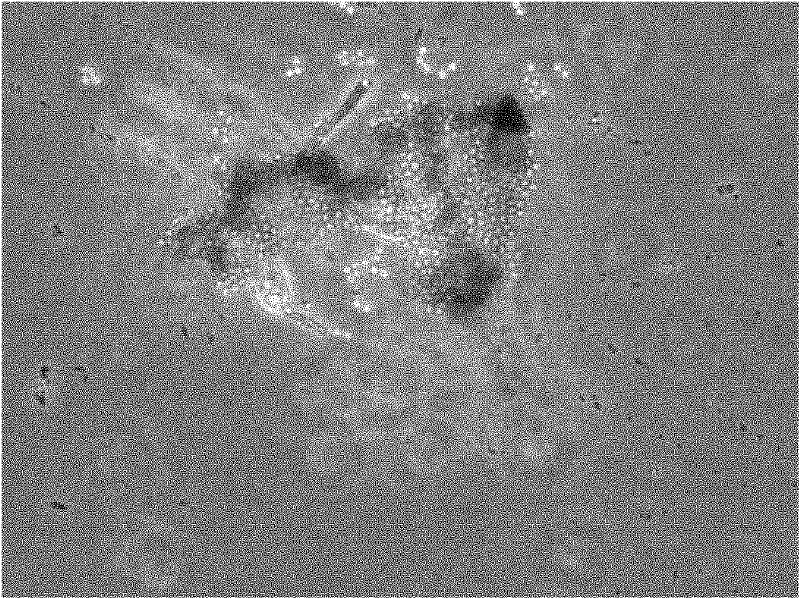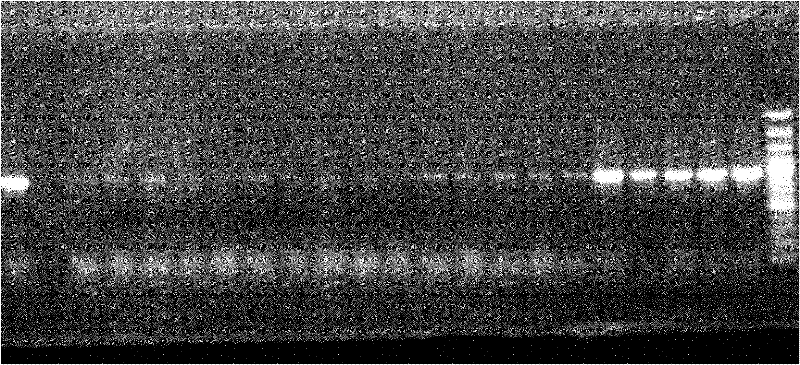Deep-sea-sourced penicillium F11 capable of producing compound secalonic acid F with cytotoxic activity
A technology of ryeconic acid and penicillium, applied in the direction of microorganism-based methods, microorganisms, fungi, etc., can solve the problems of insufficient research on deep-sea fungi
- Summary
- Abstract
- Description
- Claims
- Application Information
AI Technical Summary
Problems solved by technology
Method used
Image
Examples
Embodiment 1
[0021] A The isolation and identification of bacterial strains involved in the present invention
[0022] 21 strains of fungi were isolated from 1744m deep-sea sediments in the Lao Basin of the Southwest Pacific Ocean using PDA+chloramphenicol plates, and the tumor cell lines from A549 (lung cancer), SW480 (colon adenocarcinoma), and HL60 (acute promyelocytic leukemia) were used as models , using the CCK8 method to detect the cytotoxic activity of these 21 strains of deep-sea-derived fungi, among which a filamentous fungus F11 showed good tumor cytotoxicity, and its ethyl acetate bold substance was at a concentration of 100 μg / ml. The inhibition rates of the various tumor cell lines all reached more than 99%.
[0023] The strain was identified as Penicillum sp. by taxonomic research and molecular biology research.
[0024] The microbiological characteristics of the bacterium are: after being cultured on a PDA plate at 28° C. for three days, the colonies appear white, and most...
Embodiment 2
[0045] Example 2 Isolation and identification of ryeconic acid F in fermented products
[0046] The fungus Penicillium sp.F11 was fermented on a scale of 80 liters, extracted three times with equal amounts of ethyl acetate, and the extract was evaporated to dryness under reduced pressure to obtain 12.5 grams of extract. A small sample of the extract is extracted by cyclohexane and methanol, and the methanol phase is taken for HPLC detection ( Figure 4 ).
[0047] According to the fingerprint, the extract was extracted with cyclohexane and methanol, and the methanol phase was applied to a decompression silica gel column, and eluted with cyclohexane, ethyl acetate, acetone, and methanol in sequence. The collected ethyl acetate phase was placed on a silica gel column and eluted with cyclohexane: dichloromethane: acetone in different ratios. The eluate was collected and evaporated to dryness under reduced pressure. A total of 40 samples were collected.
[0048] Through TLC and ...
Embodiment 3
[0050] Example 3 Inhibitory effect of compounds produced by the present invention on tumor cell growth.
[0051] CCK-8 measurement method: Cell Counting Kit-8 (CCK-8) utilizes tetrazolium salt developed by Dojindo- (2-(2-methoxy-4-nitrophenyl)-3-(4-nitrophenyl)-5-(2,4-disulfobenzene)-2H-tetrazole monosodium salt), it It can be reduced to a water-soluble formazan dye in the presence of the electron carrier 1-Methoxy PMS. The CCK-8 solution can be added directly to the cell sample; there is no need to pre-mix various components. The CCK-8 assay is a highly sensitive, non-radioactive, colorimetric assay for the determination of the number of viable cells in cell proliferation or toxicity assays. The orange formazan dye produced by bioreduction by intracellular dehydrogenases is soluble in tissue culture medium, and the amount of formazan produced is proportional to the number of viable cells. Since the CCK-8 solution is quite stable and non-toxic to cells, it can be incubate...
PUM
 Login to View More
Login to View More Abstract
Description
Claims
Application Information
 Login to View More
Login to View More - R&D
- Intellectual Property
- Life Sciences
- Materials
- Tech Scout
- Unparalleled Data Quality
- Higher Quality Content
- 60% Fewer Hallucinations
Browse by: Latest US Patents, China's latest patents, Technical Efficacy Thesaurus, Application Domain, Technology Topic, Popular Technical Reports.
© 2025 PatSnap. All rights reserved.Legal|Privacy policy|Modern Slavery Act Transparency Statement|Sitemap|About US| Contact US: help@patsnap.com



